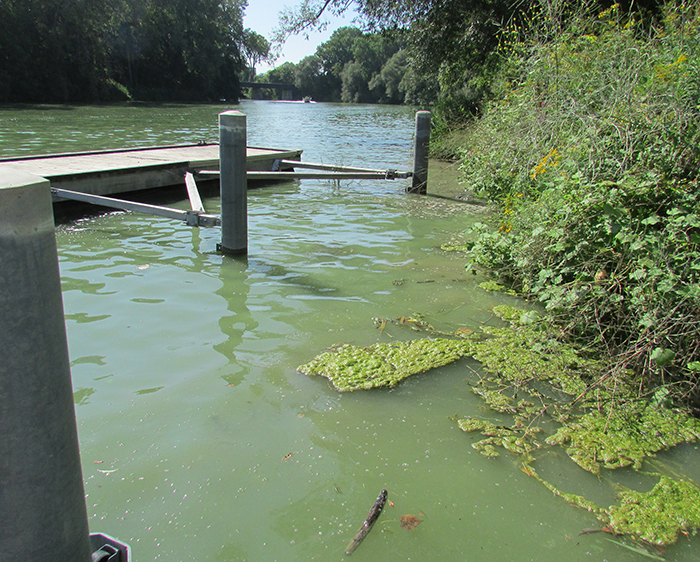The Thames River doesn’t have its normal muddy hue these days through Chatham – but it is instead green with algae.
Cyanobacteria – the same blue-green algae that has bloomed in Lake Erie in recent years – has bloomed through Chatham.
Valerie Towsley, a resource technician with the Lower Thames Valley Conservation Authority, said LTVCA staff noticed the discolouration on Aug. 28 and contacted the Ministry of Environment and Climate Change (MOECC), who in turn sent a team to conduct water sampling.
They discovered the algae bloom in the Thames starting just east of Chatham and running through the city.
Towsley said the bloom likely is a result of lack of water flow.
“Warm weather and stagnant conditions spawned the growth. It’s in the transition flow – from the upper flows levelling off downstream and the backwater flow from Lake St. Clair,” she said.
Towsley cautioned residents against swimming in the river and advised pet owners to keep their animals away from it.
“Don’t let pets drink from the Thames. Don’t go for a swim,” she said. “The toxins in the cyanobacteria can cause problems. Small dogs might get sick or die; larger dogs might get sick.”
The bacteria does not always produce the toxins associated with fish kills and other threats to animal and human health. LTVCA staff did not witness any fish die-offs when reviewing the river.
Rain or cooler weather could clear up the problem, Towsley said.
This is the first time the LTVCA staff have seen a blue-green algae bloom in the Thames, she said, adding cyanobacteria is a growing problem.
“It’s not just the lakes we have to take care of. It’s the receiving streams,” she said. “The Thames is a major contributor to the Great Lakes.”
Towsley said there is no easy way to track the cause.
“If the blue-green algae is there, there are nutrients to feed it. The stagnant water doesn’t help, as it has a chance to concentrate more,” she said. “We’d like to think we’re doing a lot better at controlling our outflow than the U.S., but maybe we aren’t doing enough.”
The algae concentration seems thickest close to Communication Road, Towsley said. It’s non-existent by Kent Bridge.
Officials from the MOECC, Health Unit and LTVCA will continue to monitor the situation.








[…] Aug 30 • Feature Story, Local News • No Comments on Algae bloom in Thames River […]